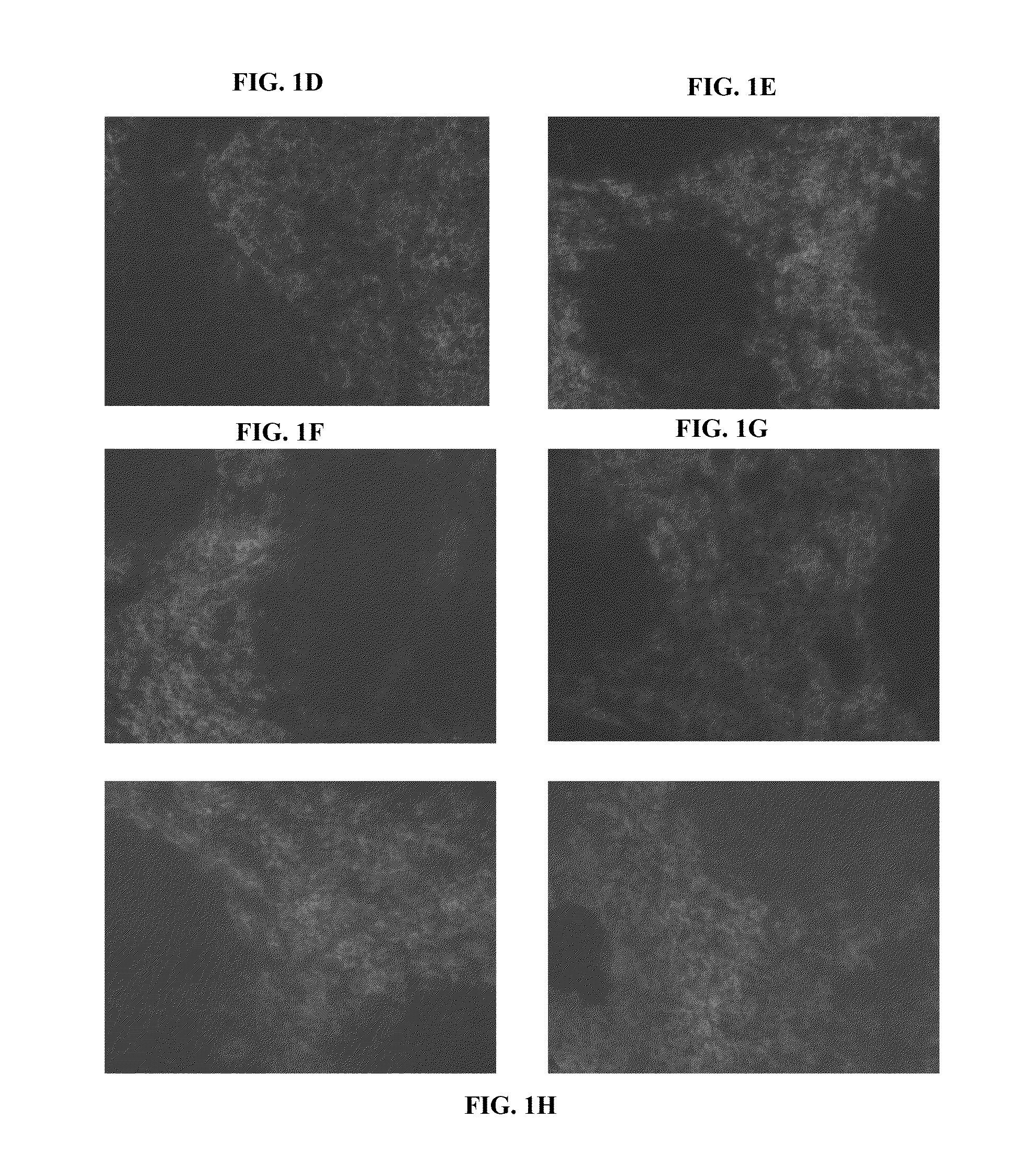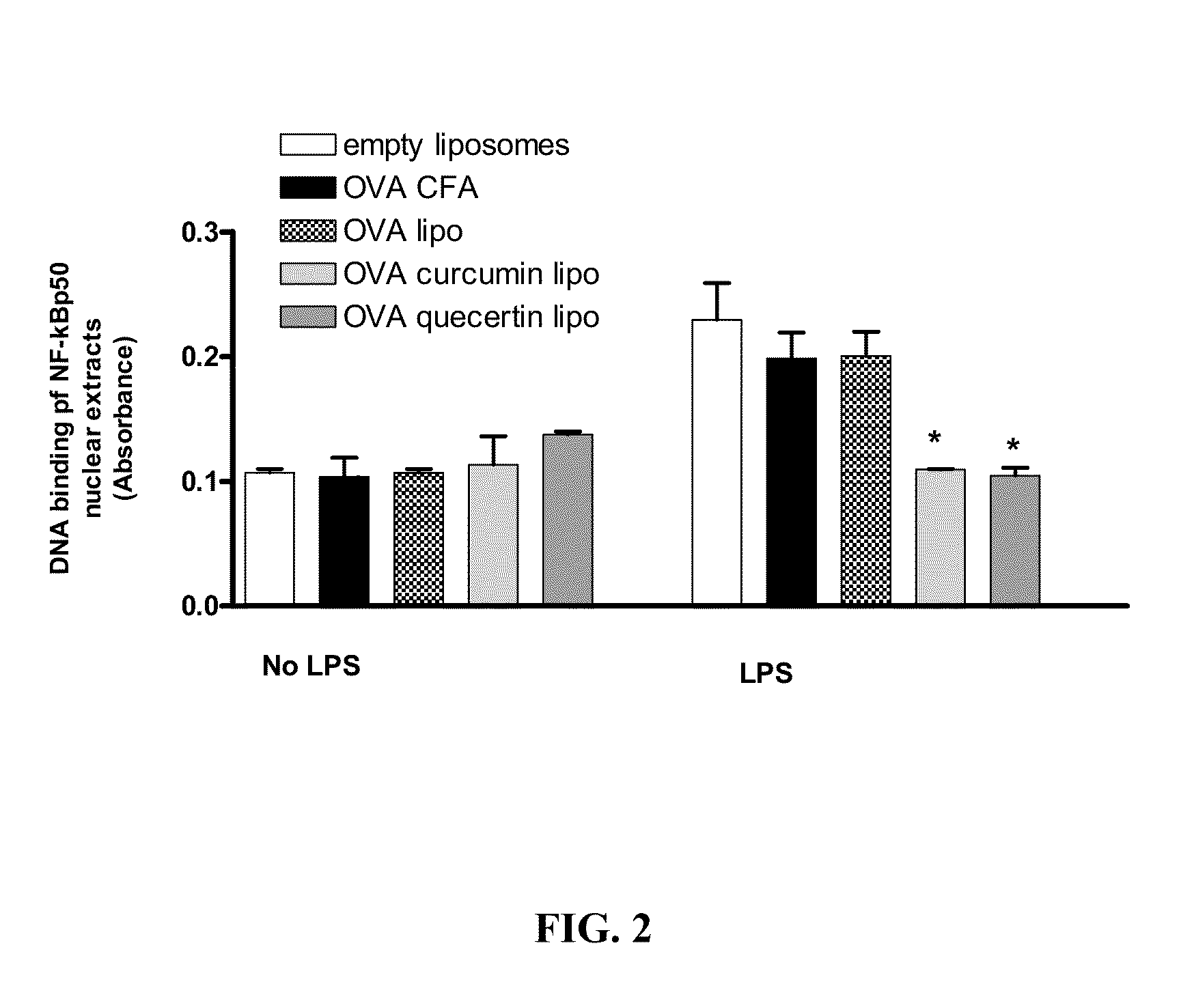Compositions and methods for modulating immune responses
a technology of immune response and composition, applied in the direction of antibody medical ingredients, drug compositions, immunological disorders, etc., can solve the problems of detrimental effects, no studies have demonstrated that transferred dc can ameliorate established type 1 diabetes in nod mice, and it is not clear whether. , to achieve the effect of reducing and increasing the level or functional activity
- Summary
- Abstract
- Description
- Claims
- Application Information
AI Technical Summary
Benefits of technology
Problems solved by technology
Method used
Image
Examples
example 1
Antigen-Specific Suppression of Arthritis by Liposomes
Materials and Methods
Reagents
[0154]Fluorescein isothiocyanate (FITC), ovalbumin (OVA), methylated bovine serum albumin (mBSA) and were purchased from Sigma-Aldrich (Missouri, USA). Penicillin, streptomycin, L-glutamine, sodium pyruvate and 2-mercaptoethanol were purchased from Gibco® Invitrogen (California, USA). Complete Freund's Adjuvant (CFA) was obtained from Sigma-Aldrich (Missouri, USA). carboxyfluorescein diacetate succinimidyl ester (CFSE) was obtained from Molecular Probes (Oregon, USA). KJ1-26 antibody labelled with phycoerythrin (PE) was purchased from BD Pharmingen (California, USA). Anti-mouse-MHC II-FITC was purchased from Biolegend (California, USA). CD4 epitope of OVA (sequence 323-339) was obtained from Auspep (Victoria, Australia). All other reagents were of at least analytical grade.
Mice
[0155]Male C57 / B16 and BALB / c mice were obtained from ARC and the OVA-specific TCR-transgenic strain, DO11.10 on the BALB / c ba...
example 2
Either Antigen-Associated Liposomes or Microspheres Induce Antigen-Specific Suppression by Induction of Regulatory T Cells
Materials and Methods
Reagents
[0203]Poly(d,1-lactic-co-glycolic acid (PLGA) microspheres were prepared by combining ovalbumin, curcumin, PLGA and poly vinyl alcohol (PVA) then homogenizing 13500 rpm, followed by stirring at 800 rpm. After density centrifugation, the particles were dispersed in 5% w / v sucrose solution, sized and lyophilized. Before use, particles were reconstituted in PBS. OVA-curcumin liposomes were prepared as described in Example 1.
In Vivo Model to Test Antigen-Specific Suppression
[0204]DO11.10 mice were primed with OVA and complete Freunds adjuvant (CFA) and 7 days later injected with either curcumin-OVA liposomes or curcumin-OVA microspheres. After 7 days, splenocytes from these mice were purified and transferred to BALB / c recipients which had been primed with OVA and CFA 7 days earlier. Recipient mice were sacrificed after 5 days and splenocy...
PUM
 Login to View More
Login to View More Abstract
Description
Claims
Application Information
 Login to View More
Login to View More - R&D
- Intellectual Property
- Life Sciences
- Materials
- Tech Scout
- Unparalleled Data Quality
- Higher Quality Content
- 60% Fewer Hallucinations
Browse by: Latest US Patents, China's latest patents, Technical Efficacy Thesaurus, Application Domain, Technology Topic, Popular Technical Reports.
© 2025 PatSnap. All rights reserved.Legal|Privacy policy|Modern Slavery Act Transparency Statement|Sitemap|About US| Contact US: help@patsnap.com



